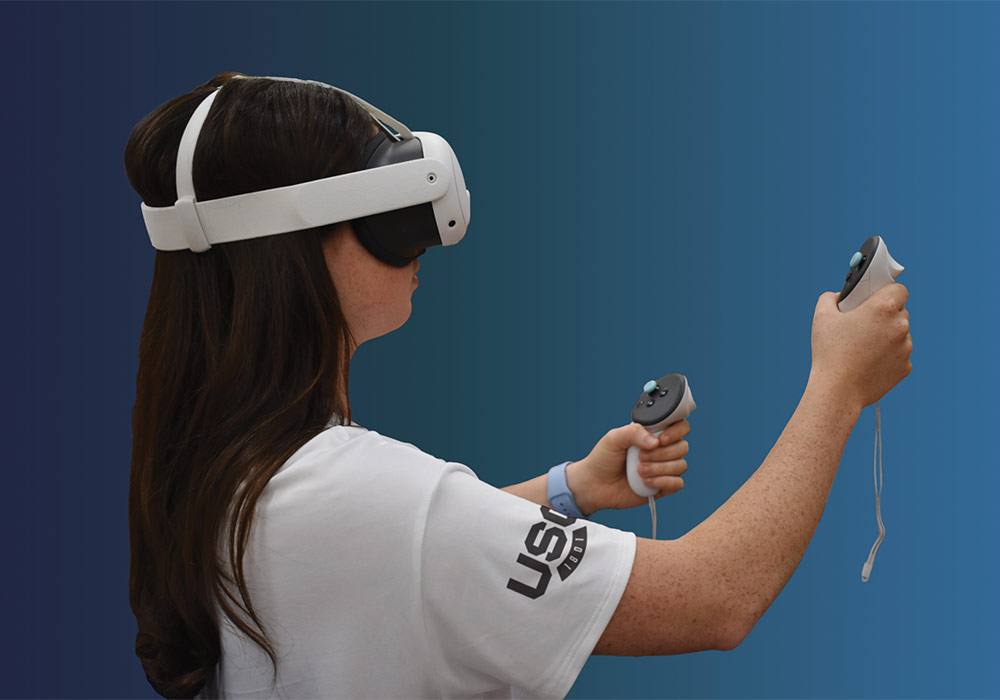In a world of budding technology and virtual reality, there is an opportunity to view different perspectives on health disparities in new ways. That’s what USC College of Nursing’s Kate Bernheisel aims to do, along with support from Jan Kubas and Sevilla Bronson.
By advancing their VR simulation experience “Seeing Through My Eyes,” they were awarded an additional teaching innovation grant toward the project. They hope to enhance student understanding of poor health outcomes and the negative impacts Social Determinants of Health have on patients.
Prior to teaching at USC and becoming an assistant professor in the Advanced Professional Nursing Practice and Leadership Department, Bernheisel worked for a few years as a nurse practitioner in a homeless clinic. That meant providing care in the clinic, on the streets and in shelters.
“I also worked in a rural setting taking care of migrant farm workers in a clinic and at their home and places of work,” she says. “I was able to experience the stark difference in how I lived versus how my patients lived.”
This experience, along with not being able to lead students through clinical experiences in the community during COVID, inspired the VR idea. Students can now better understand how living conditions impact patient health and lead to health disparities.
“I’ve always told students they need to know that every patient in the hospital comes from somewhere and goes home to somewhere,” Bernheisel says. “They need to know what those ‘somewheres’ look like in order to holistically understand how to care for their patients.”
In the 360-degree video simulation, students can witness how mundane tasks can be challenging to those who lack the necessary resources. The “lived experience” scenario Bernheisel’s team developed is based on a patient, Mr. Bland, who is learning to live in a wheelchair. Students witness issues including food access, accessibility, safe housing, economic stability, access to health care and transportation.
To measure the effectiveness of the simulation, students undergo surveys before and after to assess changes in empathy and understanding of health disparities. Additionally, students work on written case studies and reflect on the role of nurses in addressing health equity.
Knowing that students wish to continue VR work, Bernheisel plans to expand and create new 360-degree video experiences based on the lives of other patients experiencing poor health outcomes for a library of scenarios.
Student takeaways
Here is a sampling of what students are saying about the VR simulation in class:
“This honestly was the best experience I've had both in this class and the College of Nursing as a whole. It is a nice change of pace from the lectures, and the small group size and hands-on learning help me better get a grasp on the information.”
“The simulation improved my understanding of vulnerable populations and allowed me to realize ways I can help as a nurse.”
“I felt the emotions as I believe the patient was feeling. Very immersive.”
